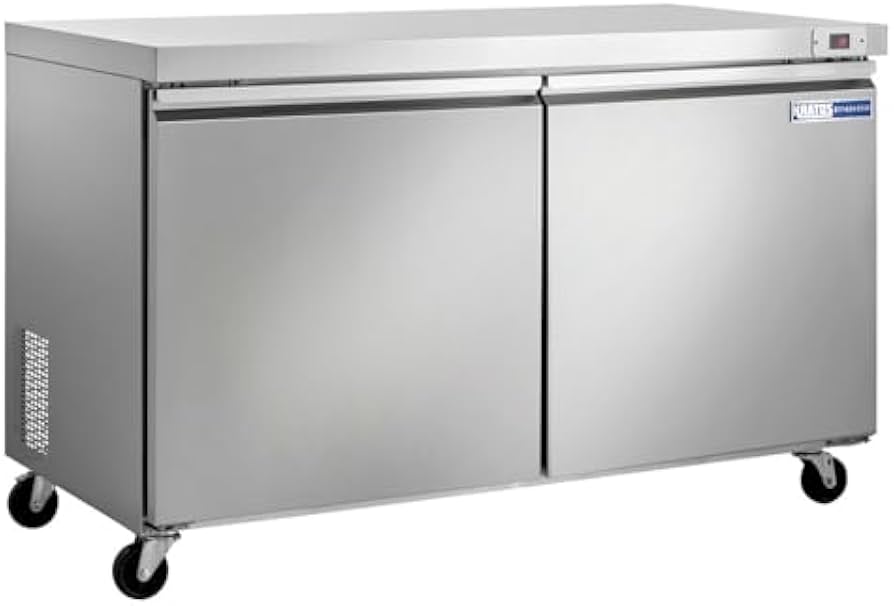Panduan Utama untuk Lemari Es dan Freezer Komersial: 10 Core Advantages Help the Catering Industry Reduce Costs and Increase Efficiency
Abstrak
In the highly competitive catering industry, The Ultimate Guide to Commercial Refrigerators and Freezers commercial refrigerators and freezers have long surpassed simple food storage functions and have become key equipment for improving operational efficiency, ensuring food safety and reducing operating costs. This article will analyze in depth how commercial refrigeration equipment can create substantial value for restaurants, cafes and other catering companies from 10 professional dimensions, including temperature control accuracy, storage design, energy-saving technology, food preservation, operational efficiency, hygiene and safety, intelligent management, durability, return on investment and industry adaptability. Through industry data comparison, actual case analysis and technical principle explanation, it provides catering operators with a scientific equipment selection guide to help you make wise investment decisions.
1. Precision temperature control: the first line of defense for food safety
Core technical indicators
- Temperature fluctuation range ±0.5℃ (±3℃ for household equipment)
- Dual compressor circulation system ensures rapid temperature recovery
- Multi-point temperature sensor real-time monitoring
Industry standard comparison
| Equipment type | Refrigeration temperature accuracy | Freezing temperature accuracy |
|---|---|---|
| Household refrigerator | ±2-3℃ | ±3-5℃ |
| Commercial refrigerator | ±0.5℃ | ±1℃ |
Argument: FDA research shows that temperature fluctuations exceeding ±1.5℃ can increase the growth rate of bacteria by 300%, and precision temperature control of commercial equipment can extend the shelf life of food by 40%.
2. Space revolution: three-dimensional storage design improves utilization by 200%
Advantages of commercial storage
- Professional shelves with a load-bearing capacity of 50kg/layer
- Adjustable stainless steel shelves (5-8 positions)
- Patented anti-dumping design for door racks
Capacity comparison case
Take the storage of 20L standard food boxes as an example:
- Household refrigerators: 15-20 boxes
- Commercial refrigerators: 35-45 boxes
Argument: A survey of the catering industry shows that commercial refrigerators extend the food procurement cycle from daily to 2-3 days, reducing procurement labor costs by 30%.
3. Energy-saving technology: A refrigeration revolution that saves 50% of electricity
Core technology breakthrough
- Inverter compressor (40% reduction in energy consumption)
- Vacuum insulation panel (50% reduction in thickness, 3 times improvement in heat preservation)
- Hot air defrosting technology (60% energy saving compared to electric defrosting)
Energy consumption data comparison
| Model | Daily power consumption | Annual electricity bill (¥0.8/kWh) |
|---|---|---|
| Traditional commercial refrigerator | 15 degrees | ¥4380 |
| Energy-saving commercial refrigerator | 7.5 degrees | ¥2190 |
Argument: ENERGY STAR certification shows that new commercial refrigerators can save ¥15,000-20,000 in electricity bills during their life cycle.
4. Fresh-keeping technology: Five barriers to lock in the original flavor of ingredients
- Humidity control (90%RH fresh-keeping chamber)
- Ultraviolet antibacterial (99% sterilization rate)
- Ethylene decomposition (delaying the ripening of fruits and vegetables)
- Air conditioning (oxygen concentration control)
- Quick freezing (-30℃ quick freezing technology)
Argument: Michelin restaurant tests show that commercial fresh-keeping technology reduces the loss rate of high-quality ingredients from 12% to 3%.
5. Operation optimization: The core of the back kitchen dynamic line design
Efficiency improvement design
- Two-way door opening (save 50% of the time to take things)
- Visual management window (inventory is clear at a glance)
- Bottom drainage system (cleaning time is reduced by 70%)
Case data: The Ultimate Guide to Commercial Refrigerators and Freezers After the chain restaurant renovated the back kitchen dynamic line, the meal preparation efficiency increased by 25%, and the number of customer orders during peak hours increased by 15%.
6. Hygiene and safety: HACCP-certified protection system
Hygiene design standards
- Seamless welded stainless steel liner
- Antibacterial door seal (99.9% antibacterial rate)
- Easy-to-remove drainage system
- Food-grade environmentally friendly refrigerant
Argument: The Ultimate Guide to Commercial Refrigerators and Freezers Food safety inspections in the catering industry show that the violation rate of companies using commercial professional equipment has decreased by 82%.
7. Intelligent management: Refrigeration monitoring in the era of the Internet of Things
Intelligent functions
- Remote temperature monitoring (real-time alarm on APP)
- Energy consumption analysis report
- Fault self-diagnosis system
- Inventory management linkage
Case: After a chain brand connected to the intelligent system, the response time for equipment failures was shortened from 8 hours to 30 minutes.
8. Military-grade durability: guarantee of 7×24-hour continuous operation
Durability comparison
| Index | Household refrigerator | Commercial refrigerator |
|---|---|---|
| Average daily operation time | 8-10 hours | 24 hours |
| Compressor life | 5-7 years | 10-15 years |
| Door opening and closing times | 50,000 times | 500,000 times |
Argument: The average trouble-free operation time of commercial equipment is 50,000 hours, which is 3-5 times that of household equipment.
9. Return on investment: Cost account with a payback period of 3 years
Cost-benefit analysis
| Project | Annual savings |
|---|---|
| Reduced food waste | ¥12,000 |
| Energy cost savings | ¥5,000 |
| Optimized labor costs | ¥8,000 |
| Total | ¥25,000 |
Conclusion: Based on an investment of ¥50,000 in equipment, the payback period is only 24 months.
10. Industry customization: matching different dining scenarios
Professional model recommendation
- Café: Multi-door display cabinet with built-in cup holder
- Sushi restaurant: -5℃~5℃ wide temperature cabinet
- Bakery: Humidity-controlled dough fermentation cabinet
- Hot pot restaurant: -30℃ frozen meat cabinet
Case: After a Japanese restaurant replaced the professional sashimi refrigerator, the customer praise rate increased by 18%.
Professional purchase suggestions
- Determine the capacity: Select according to the average daily amount of ingredients × 1.5 times
- Focus on energy efficiency: Prioritize ENERGY STAR certification
- Material selection: 304 stainless steel is the industry standard
- Functional requirements: Select additional functions according to the characteristics of the dishes
- After-sales service: Confirm whether there are service outlets locally
Ultimate conclusion:The Ultimate Guide to Commercial Refrigerators and Freezers Commercial refrigeration equipment is not a cost expenditure, but a strategic investment to enhance the competitiveness of catering companies. Choosing professional equipment that matches the business model can get considerable returns in the first year by reducing losses, reducing energy consumption and improving efficiency, while providing customers with a fresher and safer food experience, and ultimately achieving a double improvement in reputation and profits.
Core keywords: commercial refrigerators, commercial freezers, catering equipment, food safety, energy-saving refrigeration, kitchen operations, HACCP standards, intelligent monitoring, food preservation, return on investment

